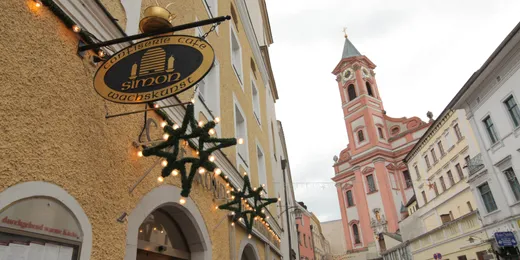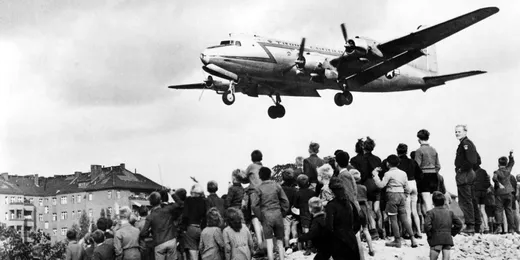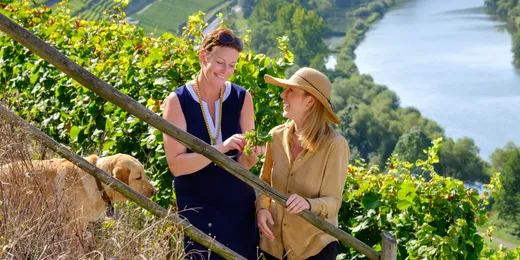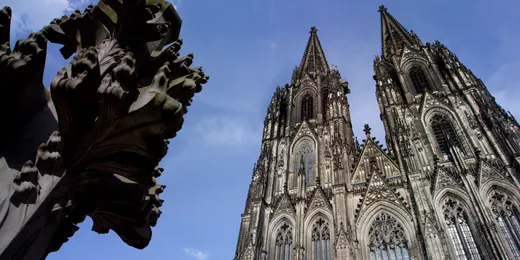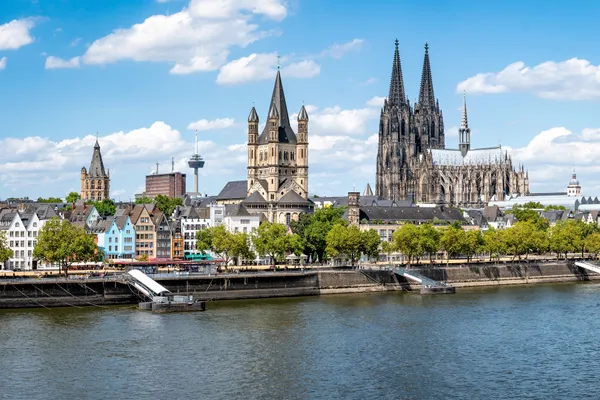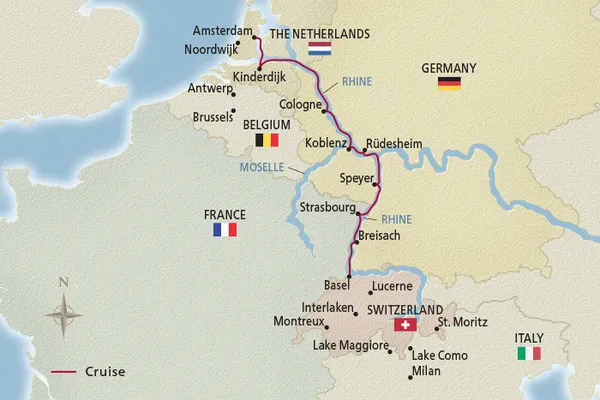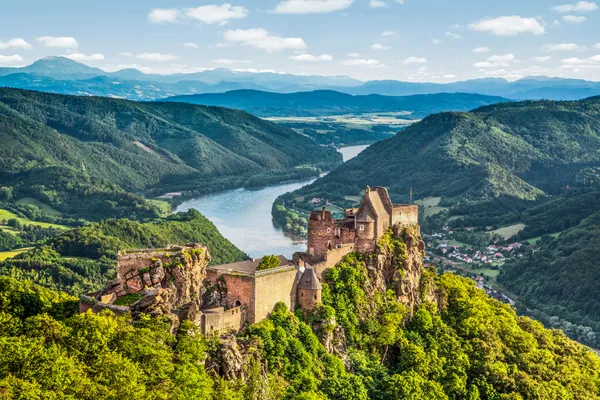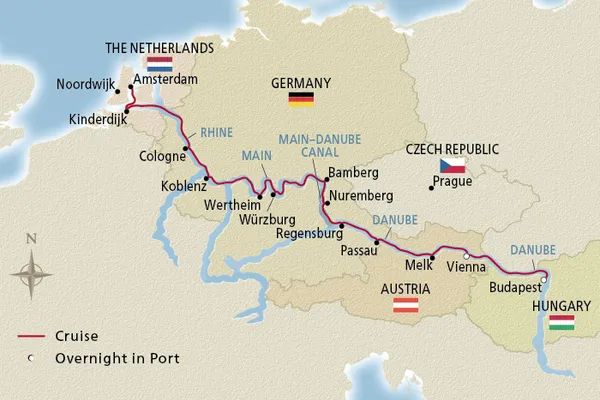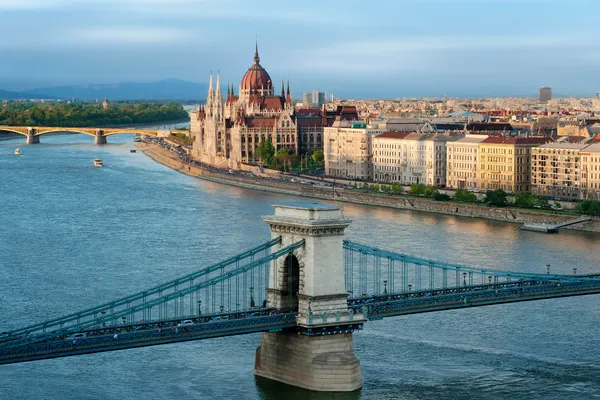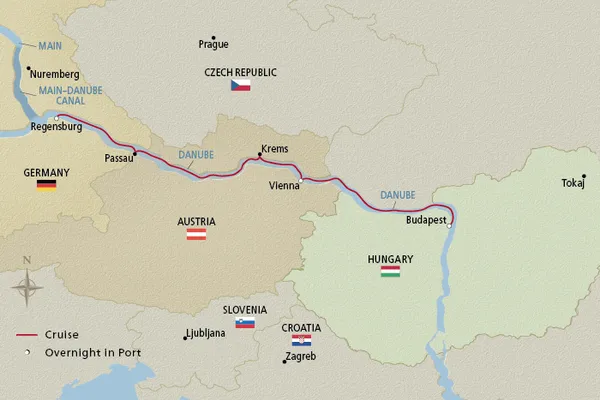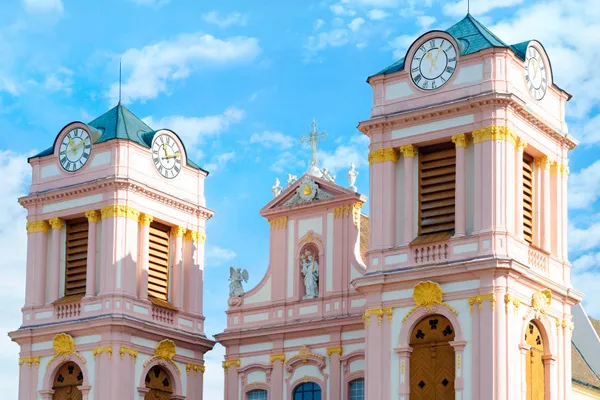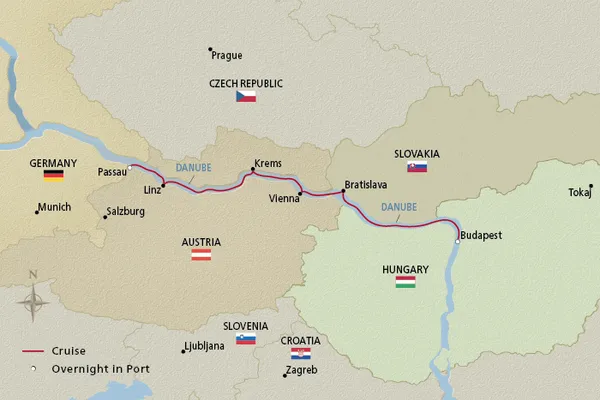
Discover Germany
Experience the rich cultural heritage and intriguing history of this enchanting area of Europe. Read on to learn more about the enriching experiences that await you in Berlin, Cologne, the Black Forest and beyond. Enhance your knowledge of German cuisine, delve into the festive charms of Bavaria’s Christmas markets and uncover the history behind the region’s iconic half-timbered houses.

Germany
Located in Central Europe, Germany occupies approximately 138,000 square miles (357,022 sq km) and is bordered by Denmark to the north, Poland and the Czech Republic to the east, Austria and Switzerland to the south and France, Luxembourg, Belgium and the Netherlands to the west.
Officially known as the Federal Republic of Germany, the country features a variety of terrains, including mountains, dense forests, rolling plains and rich farmland. While Germany’s seasonal weather can vary from year to year, it is generally characterized by a temperate climate. Extremely high summer temperatures and prolonged winter frost are rare.
Germany is divided into sixteen states, each with its unique attractions and charm. With its stunning cathedrals, impressive riverside castles, medieval cities and famed UNESCO sites, the country has become known for its cultural treasures. Some notable landmarks include:
- Berlin's Brandenburg Gate—An iconic symbol of Germany's reunification, this neoclassical monument in the heart of Berlin is a must-visit for its historical significance.
- Neuschwanstein Castle—Located in Bavaria, this fairy-tale castle is one of the most popular destinations in Germany, known for its stunning architecture and picturesque setting.
- Cologne Cathedral—A UNESCO World Heritage Site, this Gothic masterpiece is one of the largest cathedrals in Europe and a major pilgrimage site.
- The Black Forest—This dense woodland region in southwestern Germany is famous for its scenic beauty, hiking trails and charming villages. It is often cited as the setting that inspired the fairy tales of the Brothers Grimm.
- Heidelberg Castle—Overlooking the charming university town of Heidelberg, this historic castle offers breathtaking views and a glimpse into Germany's medieval past.
- Middle Rhine—This picturesque stretch of the Rhine River, known for its castle-topped hillsides, ancient towns, terraced vineyards and medieval ruins, is a UNESCO World Heritage Site. Winding past quaint villages and medieval castles, this idyllic waterway offers a window into the past and unmatched vistas.
Germany's cultural contributions extend beyond its architectural marvels. The capital and largest city, Berlin, boasts a dynamic art and music scene as well as many historical landmarks. Germany also has a rich musical heritage, being the birthplace of famous composers such as Johann Sebastian Bach, Ludwig van Beethoven and Richard Wagner. Visitors can enjoy classical music performances in renowned concert halls and opera houses in cities like Berlin and Munich.
With its blend of cultural richness, historical landmarks and natural beauty, Germany is a captivating destination for travelers seeking to explore the heart of Europe.

-
Cuisine—Famous German dishes
Germany is renowned for its culinary traditions, which offer a variety of hearty and flavorful dishes that reflect the country’s diversity. From savory meats to rich desserts, there is something to satisfy every palate. Here is a sampling of some of Germany’s most delightful dishes:
- Sauerbraten
Often considered Germany’s national dish, sauerbraten is a pot roast of beef marinated in a mixture of vinegar, water and seasonings for several days. This slow-cooked dish is typically served with potatoes and cabbage, offering a pleasant balance of tangy and savory flavors. - Black Forest Ham
Like a true Champagne from France’s Champagne region, only traditionally prepared ham from the Black Forest can call itself Schwarzwälder Schinken, or Black Forest Ham. Made from the best cut—the hind leg—the pork is pickled by hand-rubbing it in either salt or brine before smoking it. - Bratwurst
A staple at any German festival, bratwurst is a type of sausage made from pork, beef, or veal. Grilled to perfection and often served with mustard and sauerkraut, this dish is beloved for its juicy and flavorful taste. - Kartoffelsalat
German potato salad varies by region, but it generally includes boiled potatoes mixed with ingredients like bacon, onions, and a tangy vinegar-based dressing. This side dish is a favorite accompaniment to many German meals. - Black Forest Cake
This iconic German dessert features layers of chocolate sponge cake, whipped cream and cherries, all infused with a hint of cherry schnapps. Topped with chocolate shavings and more cherries, it is a decadent treat that is hard to resist. - Apfelstrudel
Another classic dessert, apfelstrudel (apple strudel) is a pastry filled with spiced apples, raisins, and breadcrumbs. Often served warm with a dusting of powdered sugar and a side of vanilla ice cream, it is a comforting way to end a meal.
- Sauerbraten
-
Culture—Bavaria’s festive Christmas markets
Germany's Christmas markets are a magical experience, and the markets in the Bavarian region are among the most enchanting. These markets, known for their festive atmosphere, traditional crafts and delightful treats, are a must-see during the holiday season.
Visitors to these markets—often located in the old town or city centers—can stroll through beautifully decorated stalls selling handmade ornaments, nutcrackers, and woolen scarves. The aroma of roasted chestnuts, bratwurst, pretzels and glühwein (mulled wine) fills the air, creating a warm and inviting atmosphere. Many markets feature live music, carolers and even ice-skating rinks, adding to the celebratory spirit.
Some of the most notable Christmas markets in Germany include:
- Dresden Striezelmarkt
Dating to 1434, this annual event is recognized as the world’s oldest Christmas market. The Ferris wheel offers stunning views of the glittering market lights and historic Altmarkt Square. - Nuremberg Christkindlesmarkt
Located in the heart of Nuremberg, this market is one of the oldest and most famous in Germany. It is highly regarded for its Nürnberger lebkuchen, or spiced gingerbread. - Passau Christkindlmarkt
Situated in Passau’s enchanting Old Town, this market is a hub of merry activities, traditional Bavarian treats and high-quality crafts, including wooden ornaments, ceramic houses and jewelry. - Cologne Christmas Market
Cologne’s first Christmas market opened in 1820—later than many other German cities—but today, it hosts several popular markets. The most iconic one centers around the magnificent Cologne Cathedral. - Breisach Weinachtsmarkt
Visitors can sip steaming aromatic glühwein, keeping warm as they browse market stalls for gifts and handicrafts. The towering, snow-covered spruce trees of the nearby Black Forest resemble a winter wonderland.
These markets typically open at the end of November and run until New Year’s Eve, providing ample time to soak in the holiday cheer. Whether you're looking for unique gifts, delicious food or simply a joyful atmosphere, Bavarian Christmas markets have something for everyone.
- Dresden Striezelmarkt
-
History—Germany’s half-timbered houses
Half-timbered houses are a hallmark of German charm, with more than 2.5 million of these picturesque structures still seen in many parts of Germany today—some dating back to the 13th century. The term “half-timbered” refers to buildings that have been constructed in such a way as to leave the structural frames exposed. The wood used to make the frames is cut in half so that a single log can be repurposed into two or more posts, with the cut side traditionally positioned to face the exterior of the building. The walls are then filled in with plaster or other materials such as brick.
The first verified mention of the term “half-timbered” did not appear until the 1820s, making its way into Joseph Gwilt’s Encyclopedia of Architecture in 1842. This building method became popular in Europe during the Middle Ages and was Germany’s premier construction technique between the 12th and 19th centuries due to the area’s preponderance of forestland. It was often employed only on the upper floors of a building to provide both more structural support and protection from any ill-intentioned marauders.
In addition to their aesthetic appeal, half-timbered houses are also environmentally friendly. By using heavy pieces of timber rather than wood that has been cut into “sticks” of lumber, less material waste is produced and the need to dry sawn wood is eliminated. The pieces are made to fit together efficiently at the construction site—and the resulting structures provide better natural insulation as well.
In the United States, colonists used this building method upon their arrival, but harsh winters quickly rendered half-timbered construction an impractical choice. The wood expanded and contracted dramatically, and the filling between the timbers proved inefficient at keeping out cold drafts.
The early 20th century, particularly the 1920s, saw a resurgence in European medieval styles’ popularity among American suburbanites. Dubbed “Tudor Revival,” this style was thought to be a signifier of sophistication and success. The timbering applied to exterior wall surfaces was purely ornamental, and stucco and pitched roofs were added to create a charming “storybook” feel.
Germany Highlights
A visit to Germany reveals the history of Europe. Impressive castles, stunning abbeys and magnificent palaces await your exploration in charming towns and captivating cities. Here are some of the highlights you may see in Germany:
- The Middle Rhine, one of Europe’s most scenic regions
- Marksburg Castle in Koblenz, built in the 13th century
- Dresden’s famed Zwinger Palace and Semper Opera House
- Medieval Regensburg, a UNESCO World Heritage Site
- The opulent Bishops’ Residenz palace in Würzburg
- Nuremberg’s iconic half-timbered houses and Gothic churches
- Traditional music in historic Rüdesheim am Rhein
- Wine tasting and dinner at a Cistercian monastery
Destination Insight Videos
-
Shopping in Passau (0:41)
Passau is one of Germany’s most charming cities. Karine shows you that the city’s gift ideas hold equal charm when she takes you to her favorite shopping spot.
-
The Berlin Airlift (3:37)
Go behind the scenes at Tempelhof Airport, long closed to visitors, and learn about the famed “Raisin Bombers” and their role during the historic Berlin Airlift, the largest in history.
-
Koblenz and sailing along the Romantic Middle Rhine (20:33)
Discover one of the Rhine River’s most enchanting stretches with Alastair, who starts his day by admiring a beautiful sunrise. Along the Upper Middle Rhine, a UNESCO World Heritage Site, join him as he sails past fairytale castles and charming villages, marveling at the vibrant autumn colors that cover the surrounding hillsides. Later, Alastair stops at a local vineyard for a wine-tasting experience by candlelight.
-
Modern Aristocracy (5:09)
The Löwenstein family is one of Germany’s cultural treasures. Step behind the scenes to meet Fürst (Prince) Alois-Konstantin and his daughter-in-law Princess Stephanie as they share family history and the secret behind the renowned Fürst Löwenstein wines.
-
Gothic Cologne Cathedral (5:13)
Explore the history of this ornate architectural masterpiece. Towering over the Rhine, the majestic Cologne cathedral has been a beacon for pilgrims from around the world for centuries.
Germany Travel FAQ
Enriching Itineraries—Germany
Choose one of our immersive voyages and discover the many benefits of exploring in Viking comfort.



